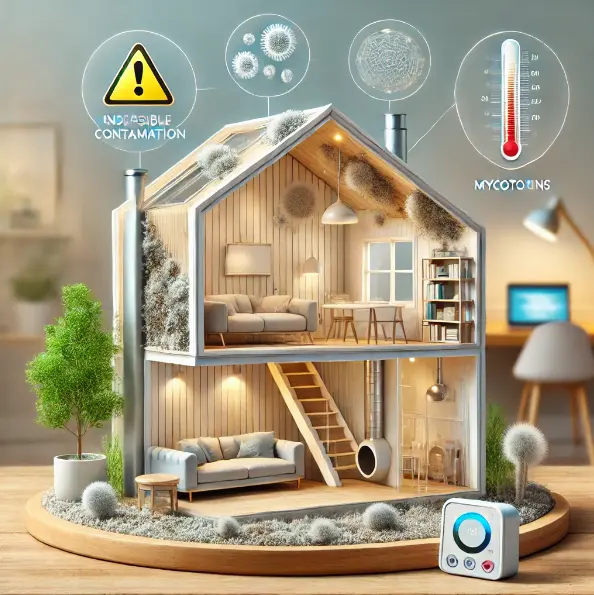Understanding Mycotoxin Contamination in Homes and Businesses - The Mould Group

Understanding Mycotoxin Contamination in Homes and Businesses 2025
Mycotoxins are toxic substances produced by certain types of mould. These toxins can become airborne and contaminate indoor environments, posing significant health risks to occupants. Despite their prevalence, there is limited awareness about the dangers of mycotoxins in Australia.
What Are Mycotoxins?
Mycotoxins are secondary metabolites produced by various mould species. They are not visible to the naked eye and can become a silent threat in homes and businesses. Common types of mycotoxins include aflatoxins, ochratoxins, and trichothecenes. These substances can impact the respiratory system, neurological function, and immune response.
The World Health Organisation (WHO) reports that mycotoxins contribute to significant health burdens worldwide. Indoor air quality studies show that mycotoxins are present in buildings affected by water damage and mould growth.
How Do Mycotoxins Affect Health?
Exposure to mycotoxins can lead to a range of health issues. People may experience symptoms like chronic fatigue, headaches, respiratory problems, and skin irritation. In severe cases, long-term exposure may contribute to serious conditions such as liver damage, immune suppression, and neurological disorders.
According to research from the National Centre for Biotechnology Information (NCBI), 10-20% of people exposed to high levels of mycotoxins develop chronic symptoms. Children, the elderly, and individuals with compromised immune systems are particularly vulnerable.
The Importance of Mould Testing
Mould testing is crucial for detecting mycotoxins in residential and commercial properties. Often, mould is hidden in places like wall cavities, under carpets, or behind furniture. Without testing, property owners may remain unaware of the toxic risks in their environment.
The Australian Institute of Health and Welfare states that mould-related illnesses are underreported due to the lack of education and awareness. Investing in professional mould testing can help identify hidden threats and prevent long-term health consequences.
How Do Mycotoxins Spread?
Mycotoxins can spread through air, dust, and even ventilation systems. When mould spores release mycotoxins, they can become airborne and circulate throughout a property. Contaminated surfaces can also transfer these toxins to occupants, especially in poorly ventilated areas.
A study conducted in 2021 revealed that up to 30% of buildings with water damage in Australia have detectable levels of mycotoxins. This highlights the need for thorough assessment and remediation efforts.
Addressing the Lack of Education
One major challenge in Australia is the lack of education about mycotoxins. Many people do not realise that even small patches of mould can release harmful toxins. Awareness campaigns and educational initiatives are essential to inform the public about these hidden dangers.
Property owners need to understand that visible mould is only part of the problem. The real threat lies in the invisible toxins that can remain long after the mould is removed. Building health experts advocate for stricter guidelines and testing protocols to protect Australians from mycotoxin exposure.
Preventive Measures and Remediation
Preventing mycotoxin contamination begins with moisture control. Fix leaks, improve ventilation, and keep indoor humidity levels below 60%. Regular inspections of high-risk areas, like bathrooms and basements, can help prevent mould growth.
If mould and mycotoxins are detected, professional remediation is essential. DIY methods often fail to remove all contaminants and may spread the problem further. The Mould Group specialises in safe and effective mould and mycotoxin remediation, ensuring your property is restored to a healthy state.
Case Study: The Impact of Mycotoxins on Indoor Air Quality
A recent case in Sydney demonstrated the severity of mycotoxin contamination. A family experienced chronic respiratory issues and fatigue, only to discover that their home had high levels of mycotoxins due to hidden mould. After professional testing and remediation, their health significantly improved, showcasing the importance of addressing these hidden threats.
Moving Forward: Staying Safe from Mycotoxins
Understanding the dangers of mycotoxins is the first step towards a safer environment. If you suspect mould in your home or workplace, don’t ignore the risks. Professional testing and remediation can protect your health and that of your loved ones.
Stay tuned for Article 4: Mycotoxin Remediation Techniques. It will cover the latest strategies for effectively removing mycotoxins and restoring safe indoor environments.

